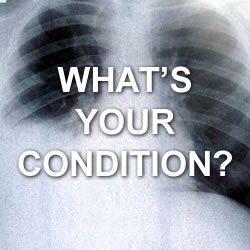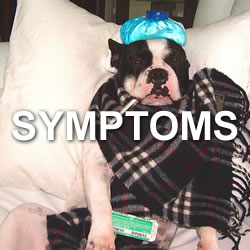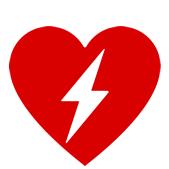SAD
I miss the sun, light, and warmth. Depression plays a big role during these winter months. When I have to get up, go about doing my daily activities, somebody inside me asks Why bother? — Peter Allan Bekke

image by: vkovalcik
HWN Suggests
6 Ways to Defeat Seasonal Affective Disorder (SAD)
SAD is a mood disorder, and although it is generally thought of as a winter problem, it can also occur in other seasons. The major distinction between SAD and other forms of depression is that it occurs at the same time every year, for at least two years, and there's a remission of symptoms off-season. It usually begins in the fall in anticipation of the long, cold winter and lasts until early spring.
During this time peoples' energy levels are low, there's a tendency to isolate and oversleep. People may have difficulty concentrating and feel hopeless. People suffering from SAD also may lose interests in things they typically enjoy and crave carbohydrates, thus putting on weight.
Here's…
Resources
 It's That SAD Time of The Year
It's That SAD Time of The Year
As we watch the winter solstice disappearing in the rear view, we find ourselves eagerly awaiting the lengthening daylight hours and the early signs of spring on the horizon. So why are so many of us beginning to submerge our souls in the winter blahs?
 Do SAD lamps actually work?
Do SAD lamps actually work?
Light therapy products, touted as treatments for seasonal affective disorder, are steadily on the rise.
 How To Combat The Winter Blues And Seasonal Affective Disorder At Home
How To Combat The Winter Blues And Seasonal Affective Disorder At Home
If you look out the window and you’re not sure if it’s 5:37 p.m. or midnight, it means daylight savings time is officially over. If you experience the “winter blues” this time of year, know you’re not alone.
 How to Cope With Seasonal Affective Disorder
How to Cope With Seasonal Affective Disorder
It happens every year, and every year, it’s a shock to the system. Nature throws itself one last party, festooning every tree in a crisp blaze of glory. After we’ve digested the last of the spiced cider, after the pumpkins have gone soft, the long, dark days of winter descend. In much of the Northern Hemisphere, December through March brings blustery cold that makes dreary days feel as if we’ve been banished to Siberia. Sound dramatic? Probably not to the roughly 6 percent of Americans suffering from Seasonal Affective Disorder.
 Seasonal Affective Disorder doesn’t exist – here’s the science
Seasonal Affective Disorder doesn’t exist – here’s the science
So how might we reconcile the fact that seemingly conclusive research is unable to demonstrate an association between symptoms of depression and sunlight exposure, with the sheer number of people who believe they suffer from SAD?
How to deal with seasonal affective disorder and stay alert this winter
Hibernation, unfortunately, is not a healthy option for humans.
What’s Up With That: The Science Behind Why Dark Winter Days Bum People Out
So what’s the culprit? There are several hypotheses. One hinges on a possible link between vitamin D and mood.
9 Ways To Cope With Seasonal Affective Disorder
While many people can still function even if they're feeling a bit melancholy, for some, winter brings a clinical form of depression called seasonal affective disorder, also known as SAD.
Bright Ideas for Treating the Winter Blues
Light therapy can relieve symptoms in 80% of SAD cases, Dr. Terman says. It's most effective when timed to fit a person's individual circadian rhythm, ideally starting about eight hours after the pineal gland starts secreting melatonin, the hormone that stimulates sleep. That varies widely from person to person, depending on whether you're a night owl or a morning lark.
Coming Out of the Cold: Treating Your Seasonal Affective Disorder
Between six and 10 percent of the population suffer from seasonal depression during the winter months -- but there are ways to end it.
Feeling S.A.D.? Lighten up if it’s seasonal affective disorder
For people like me, who experience mild symptoms, the best strategy is to go outside during the day — morning is best — rather than hibernating indoors (or making endless runs to the snack and coffee machines). Exposure to natural light can also help to restore your body’s natural rhythms — and perhaps boost your mood and mental functioning as well.
How To Tell If It's Seasonal Depression Or Just A Bad Mood
Everyone has bouts of the winter blahs -- who wouldn't, after being confined to the indoors for most of the week? But the key is the frequency of your mood swings. If your sour disposition is persistent, it might be time to check in with a physician.
Into the Light: The Season for Seasonal Affective Disorder Is Real
We don't know exactly why Seasonal Affective Disorder occurs. The research says there are probably several causes. Scientists have discovered that a neurotransmitter called serotonin may not be functioning well in people with SAD. Also hormones like melatonin play a role. There is the eye's sensitivity to light and the circadian rhythms, which involve sleep-wake cycles during the changing seasons.
Learning How to Cope With Seasonal Affective Disorder
For a number of people, winter also marks the beginning of a recurring bout of depression known as seasonal affective disorder, classified in the Diagnostic and Statistical Manual of Mental Disorders as a specifier for major depressive disorder.
Seasonal Affective Disorder - The Basics
So, why do I say that it is not surprising the exposure to bright light alleviates both seasonal depression and other kinds of depression, and that different mechanisms may be involved?
Seasonal Affective Disorder Might Not Be A Real Thing, Some Researchers Say
But numerous studies have emerged to counter the claim that the changing seasons or weather patterns have anything to do with people feeling more depressed during winter months. While depression is all too real for those who suffer from it, some researchers say the debate still isn't closed on whether SAD itself is an actual thing. In fact, it may be chalked up to a perception that depression worsens during winter months, as opposed to a diagnosable illness backed by hard evidence, emerging research contends.
Seasonal affective disorder: Why the short days of winter make you depressed
Scientists once doubted the existence of this disorder, but it's now well-established and believed to affect somewhere between 1.4 and 9.7 percent of the US population, with greater numbers the farther north you go. Although the underlying mechanisms aren't fully understood, researchers have put together many pieces of the puzzle, and we now have a treatment that helps most sufferers: morning exposure to artificial light that mirrors the spectrum of light emitted by the sun.
The Dangers of Winter Darkness: Weak Bones, Depression and Heart Trouble
Long periods without sunshine can play a role in a surprising variety of physical and mental disorders.
Therapy Over Lamps for Seasonal Depression
Cognitive behavioral therapy gives longer-term benefits and is less of a time burden than sitting under a light for 30 minutes a day.
What is Seasonal Affective Disorder?
Answers from the doctor who first described the condition.
Will Norway Ever Beat the Winter Blues?
Scandinavia uses giant mirrors, light-therapy clinics, and even positive thinking to overcome seasonal depression, but the disorder remains mysterious.
Winter Is a Black Hole: How I Deal With Seasonal Depression
I've found that a lot of non-pill treatments work for my depression. In the spring and summer months I can obstruct my anxiety and depression with exercise, weed, going out with friends, and ample time spent in the sun. The endorphins are good. But during the winter, these options diminish or disappear. Netflix and Seamless are poor replacements for sunshine and jogging. And they make me lethargic and unhealthy: booster shots for depression. While I fight my internal will, I'm trying to commit to better methods of management.
 6 Ways to Defeat Seasonal Affective Disorder (SAD)
6 Ways to Defeat Seasonal Affective Disorder (SAD)
The major distinction between SAD and other forms of depression is that it occurs at the same time every year, for at least two years, and there's a remission of symptoms off-season. It usually begins in the fall in anticipation of the long, cold winter and lasts until early spring. During this time peoples' energy levels are low, there's a tendency to isolate and oversleep.
Mental Health America
Three out of four SAD sufferers are women. The main age of onset of SAD is between 18 and 30 years of age. SAD occurs in both the northern and southern hemispheres, but is extremely rare in those living within 30 degrees latitude of the equator. The severity of SAD depends both on a person’s vulnerability to the disorder and his or her geographical location.
PsycheCentral
There are many effective treatments for winter depression, some of which you can do to help yourself. Increasing your daily exposure to as much natural light as possible can be helpful to many. Any time that you have the opportunity to gain access to more sunlight in the winter months, you should try to do so. Taking a walk throughout the day (even if you don't normally do so), sitting next to a south-facing window at your office, in a classroom, or at home will increase your sunlight exposure. Exercising next to a window or outdoors (when possible) is another activity that can help.
Psychology Today
Because winter depression is probably caused by a reaction to a lack of sunlight, broad-band light therapy is frequently used. This therapy requires a light box or a light visor worn on the head like a cap.
MayoClinic
nal affective disorder (SAD) is a type of depression that's related to changes in seasons — SAD begins and ends at about the same times every year. If you're like most people with SAD, your symptoms start in the fall and continue into the winter months, sapping your energy and making you feel moody. Less often, SAD causes depression in the spring or early summer. Treatment for SAD may include light therapy (phototherapy), psychotherapy and medications.
MedicineNet
Seasonal affective disorder is less common where there is snow on the ground. Seasonal affective disorder is about four times more common in women than men, and the average age of people when they first develop this illness is 23 years of age. People of all ages can develop seasonal affective disorder.
MedlinePlus
To manage your symptoms at home: •Get enough sleep. •Eat a healthy foods. •Take medicines the right way. Ask your health care provider how to manage side effects. •Learn to watch for early signs that your depression is getting worse. Have a plan if it does get worse. •Try to exercise more often. Do activities that make you happy.
NHS
In people with SAD, a lack of sunlight and a problem with certain brain chemicals stops the hypothalamus working properly. The lack of light is thought to affect the: •production of the hormone melatonin •production of the hormone serotonin •body's circadian rhythm (its internal clock, which regulates several biological processes during a 24-hour period).
Patient
Seasonal affective disorder (SAD) is a type of depression which occurs when you develop symptoms of depression during the darker winter months each year. Winter blues or sub-syndromal SAD (S-SAD) is a less severe form of the condition. In the UK and other countries north of the equator, the symptoms usually develop at some time between September and November and continue until March or April. Symptoms tend to be worse in December, January and February.
TeensHealth
Someone with SAD will show several particular changes from the way he or she normally feels and acts. These changes occur in a predictable seasonal pattern. The symptoms of SAD are the same as symptoms of depression...

Introducing Stitches!
Your Path to Meaningful Connections in the World of Health and Medicine
Connect, Collaborate, and Engage!
Coming Soon - Stitches, the innovative chat app from the creators of HWN. Join meaningful conversations on health and medical topics. Share text, images, and videos seamlessly. Connect directly within HWN's topic pages and articles.
















